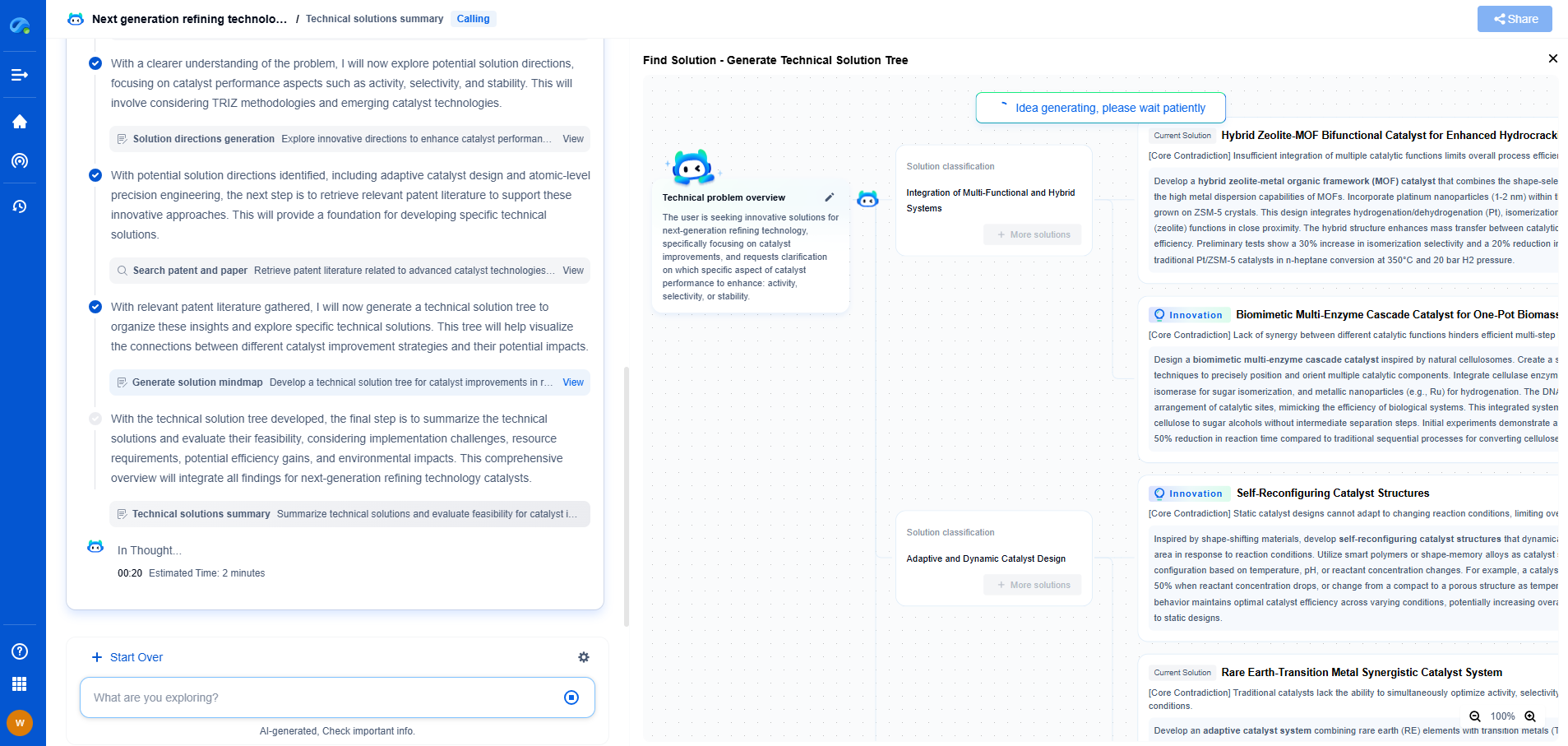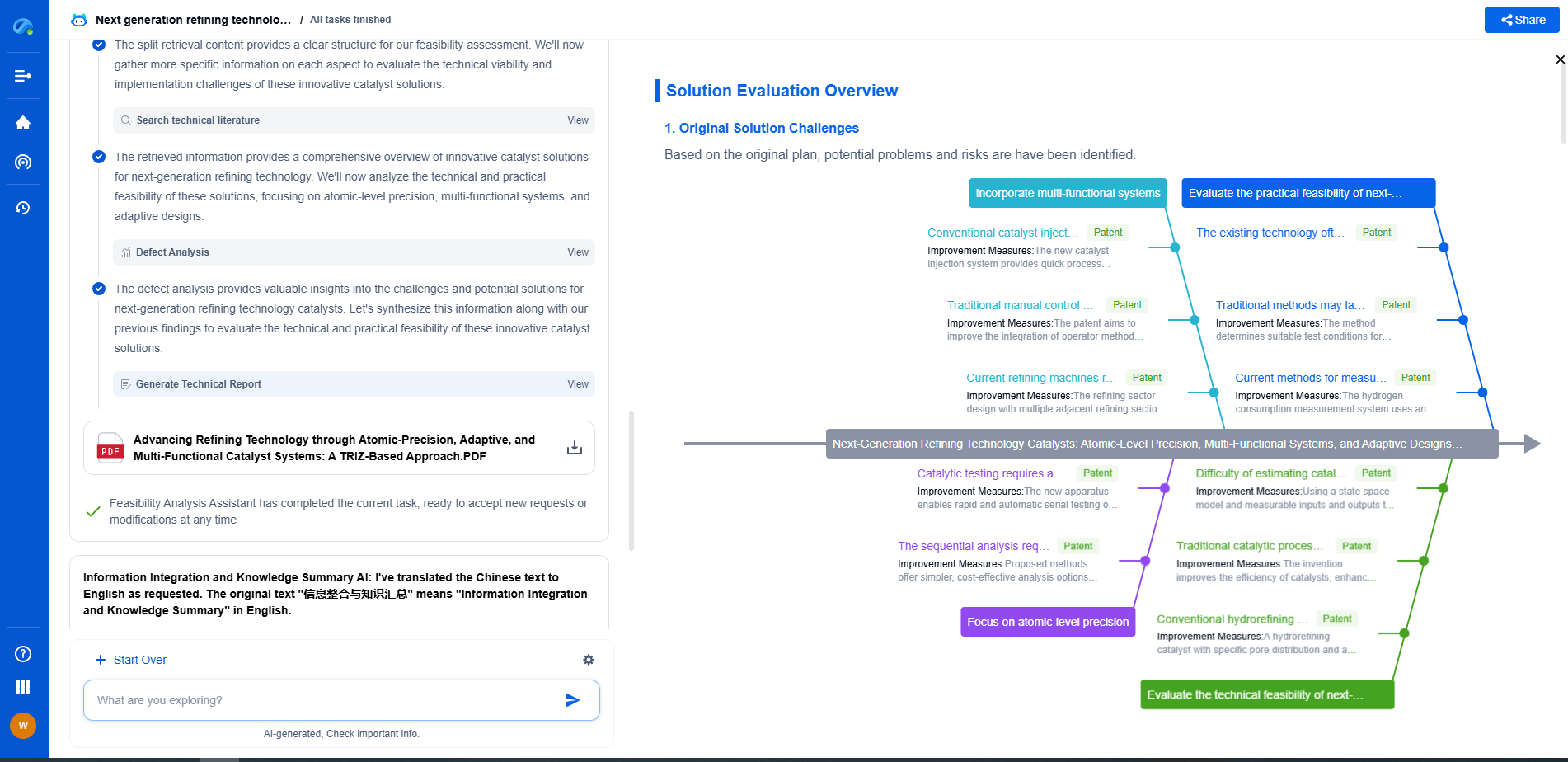DC vs AC Coupled Energy Storage Systems: Which One to Choose?
JUN 26, 2025 |
As we strive towards a more sustainable future, energy storage systems are becoming increasingly crucial in managing renewable energy sources like solar and wind. These systems help in balancing supply and demand, ensuring a steady supply of power even when the sun isn't shining or the wind isn't blowing. When considering energy storage options, one major decision involves choosing between DC (Direct Current) coupled and AC (Alternating Current) coupled systems. Each has its own set of advantages and considerations.
What is DC Coupled Energy Storage?
In a DC coupled system, solar panels generate direct current, which is then routed through a charge controller before being stored in batteries. The stored energy can be later converted into alternating current by an inverter for use in homes or businesses. DC coupled systems are often preferred in off-grid applications and scenarios where maximizing efficiency is key.
Advantages of DC Coupled Systems
1. Higher Efficiency: DC coupling typically results in higher overall system efficiency since the energy is converted from DC to AC only once, during discharge. This minimizes energy loss.
2. Cost-Effective: These systems often require fewer components, potentially leading to lower installation and maintenance costs.
3. Better Battery Integration: DC systems allow for better integration with battery storage, making them ideal for applications where energy storage is a priority.
Considerations for DC Coupled Systems
1. Complexity: The design and installation of DC systems can be more complex, requiring precise matching of battery and solar panel voltages.
2. Limited Flexibility: Once set up, altering or expanding DC systems can be challenging.
What is AC Coupled Energy Storage?
AC coupled systems convert solar-generated DC electricity to AC using a solar inverter. The energy can be used immediately or sent to the grid. If stored, it is converted back to DC for battery storage and then reconverted to AC when drawn from the battery. This process allows for more flexibility in managing energy flows.
Advantages of AC Coupled Systems
1. Flexibility: AC coupled systems can easily integrate with existing grid-tied solar systems, making them suitable for retrofitting.
2. Scalability: These systems are easily expandable, allowing for future increases in energy generation or storage capacity.
3. Compatibility: AC coupling is often more compatible with diverse types of equipment, making it easier to mix and match components.
Considerations for AC Coupled Systems
1. Lower Efficiency: Due to multiple energy conversions (DC to AC and vice versa), AC systems may experience more energy loss, impacting overall efficiency.
2. More Components: AC coupled systems typically require additional inverters, which can increase costs and complexity.
Choosing the Right System for Your Needs
The decision between DC and AC coupled energy storage systems hinges on your specific needs and circumstances. If efficiency and integration with battery storage are top priorities, and the system is intended for a new installation, a DC coupled system might be the best option. On the other hand, if you have an existing solar installation or anticipate future expansion, an AC coupled system's flexibility and ease of integration might be more beneficial.
Conclusion
Both DC and AC coupled energy storage systems offer valuable benefits and potential drawbacks. By thoroughly understanding these systems and considering your specific energy goals, you can make an informed decision that aligns with your sustainability objectives and financial considerations. As technology continues to evolve, both systems are likely to become more efficient and adaptable, offering even greater support for renewable energy integration in our homes and businesses.
Stay Ahead in Power Systems Innovation
From intelligent microgrids and energy storage integration to dynamic load balancing and DC-DC converter optimization, the power supply systems domain is rapidly evolving to meet the demands of electrification, decarbonization, and energy resilience.
In such a high-stakes environment, how can your R&D and patent strategy keep up?
Patsnap Eureka, our intelligent AI assistant built for R&D professionals in high-tech sectors, empowers you with real-time expert-level analysis, technology roadmap exploration, and strategic mapping of core patents—all within a seamless, user-friendly interface.
👉 Experience how Patsnap Eureka can supercharge your workflow in power systems R&D and IP analysis. Request a live demo or start your trial today.
- R&D
- Intellectual Property
- Life Sciences
- Materials
- Tech Scout
- Unparalleled Data Quality
- Higher Quality Content
- 60% Fewer Hallucinations
Browse by: Latest US Patents, China's latest patents, Technical Efficacy Thesaurus, Application Domain, Technology Topic, Popular Technical Reports.
© 2025 PatSnap. All rights reserved.Legal|Privacy policy|Modern Slavery Act Transparency Statement|Sitemap|About US| Contact US: help@patsnap.com

